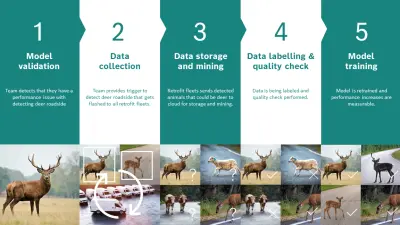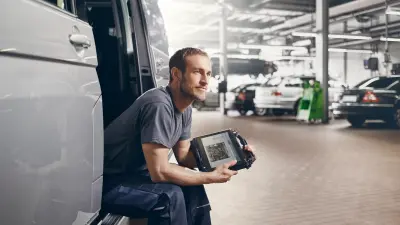Bosch visual data collection - project details

How can we develop automated systems that react safely and reliably?
An automated vehicle has various systems that are used to detect its environment and to derive and implement appropriate responses from the data acquired. Sensor data is processed by algorithms that use artificial intelligence to continuously recognize situations in fractions of a second so that an appropriate maneuver can be initiated in the next step. Comparable to a student driver, the algorithm must first be taught what corresponding situations look like in the first place. This requires real image data from road traffic.
The higher the degree of automation, the more extensive the system’s driving task. The more complex the task that the AI is taking over, the more important it is that automated systems correctly assess critical driving situations and react accordingly. This means that for a correct, reliable, and timely response, sufficient data must be available to train the artificial intelligence algorithms.
With the visual data collection project, Bosch is meeting the growing need for data as a basis for upcoming automated driving use cases. Since large amounts of data are needed from many vehicles in different regions, the project focuses on collaboration with vehicle fleet operators.
Challenges
Highly dangerous situations such as accidents don't happen very often. Nevertheless, autonomous vehicles need corresponding data in order to respond correctly.
More road traffic data is needed.
The higher the level of automated driving that we want to achieve, the more data we need.
A more diverse range of road traffic data is needed.
To ensure that the image processing system in the vehicle is optimally trained for every scenario that can occur on the road, we need a diverse range of data.
Five steps in artificial intelligence training

Using a sensor-based camera system installed on the inside of the windshield of fleet vehicles, the project collects real street image data, which is then used as the data basis for training the algorithms.
The camera system used for this purpose works exclusively on the basis of events. Only predefined traffic situations are detected, temporarily stored, and then transmitted to Bosch through the mobile network. In this way, a large database of image data sets is built up over time, which is used to train the algorithms.


